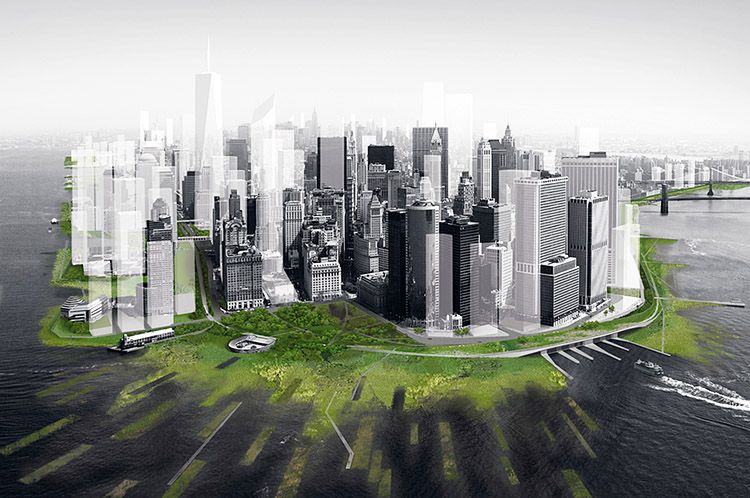
How Nature Can Help Provide a Much-Needed Solution for Dramatic Sea Level Rise

Even if we manage to reach our goals for reducing greenhouse gases, the world will experience a dramatic sea level rise by 2100—the latest study estimates by as much as six feet.
With a water level that much higher than it is today, major coastal cities such as Boston, New York and Miami are sure to be below sea level. So the key question now is, how do we adapt to climate change effects we can no longer avoid?
A single solution to rising oceans won’t fix the problem, but there is a “soft option” that can help protect our coasts when complemented with other measures.
Living Shorelines Have Role to Play
Sea level rise means entire regions, not just beachfront towns, will have to adapt.
With coastal areas accounting for 42 percent of America’s economic output, we must make effective climate change and sea level-rise adaptation strategies a priority today.
Soft options, sometimes called living shorelines or natural infrastructure, include features such as sand dunes, barrier islands and maritime forests. They help lessen storm surge and flooding while also providing habitat, water filtration and beautiful places we can all enjoy.
These and other natural infrastructure measures can be used alone or to complement and enhance hard infrastructure such as levees and floodwalls to create multiple lines of defense.
But natural infrastructure measures also have a distinct advantage over hardened approaches: They can grow.
Beaches, dunes, wetlands, mangroves and oyster reefs can keep pace with sea level rise and provide critical buffers—a first line of defense against waves and floods.
Coastal Communities Taking Action
Communities on every coast are now beginning to think about changes in zoning and building standards to protect themselves from flooding, while also investigating how to restore natural defenses. Such redundant measures can improve their resiliency—and also give them environmental and economic benefits that improve quality of life.
Seabrook, New Hampshire, for example, has a plan to build and strengthen its dunes and allow them to continue to grow, to protect coastal properties.
Louisiana is also restoring its wetlands, cypress swamps and barrier islands as part of its strategy to cope with sea level rise and storm disasters. And across Hampton Roads, Virginia, living shorelines are sprouting up as alternatives to bulkheads to combat erosion and improve Chesapeake Bay water quality.
Such efforts are taking off in other countries, too. Communities in across Southeast Asia, for example, are now replanting mangroves to reduce impacts from tsunamis and storm surges.
Live with Water, Fight It or Retreat?
Scientists are expecting sea levels to rise faster and higher than previously predicted. So the truth is, we’ll have to soon make choices about where, when and how we adapt to live with water, defend our coasts and retreat.
Fortunately, restoring coastal ecosystems can fit nicely with these strategies to provide human communities with benefits not only on stormy days, but year-round.
YOU MIGHT ALSO LIKE
Scientists Share Why Keeping Warming Under 1.5 Degrees Celsius Is Crucial
New Energy Bill Passed by Senate Largely Ignores Climate
Josh Fox: It’s Time for Coastal Cities to Wake Up
NOAA: Last Month Was by Far the Planet’s Warmest March Since Record Keeping Began

 233k
233k  41k
41k  Subscribe
Subscribe 

